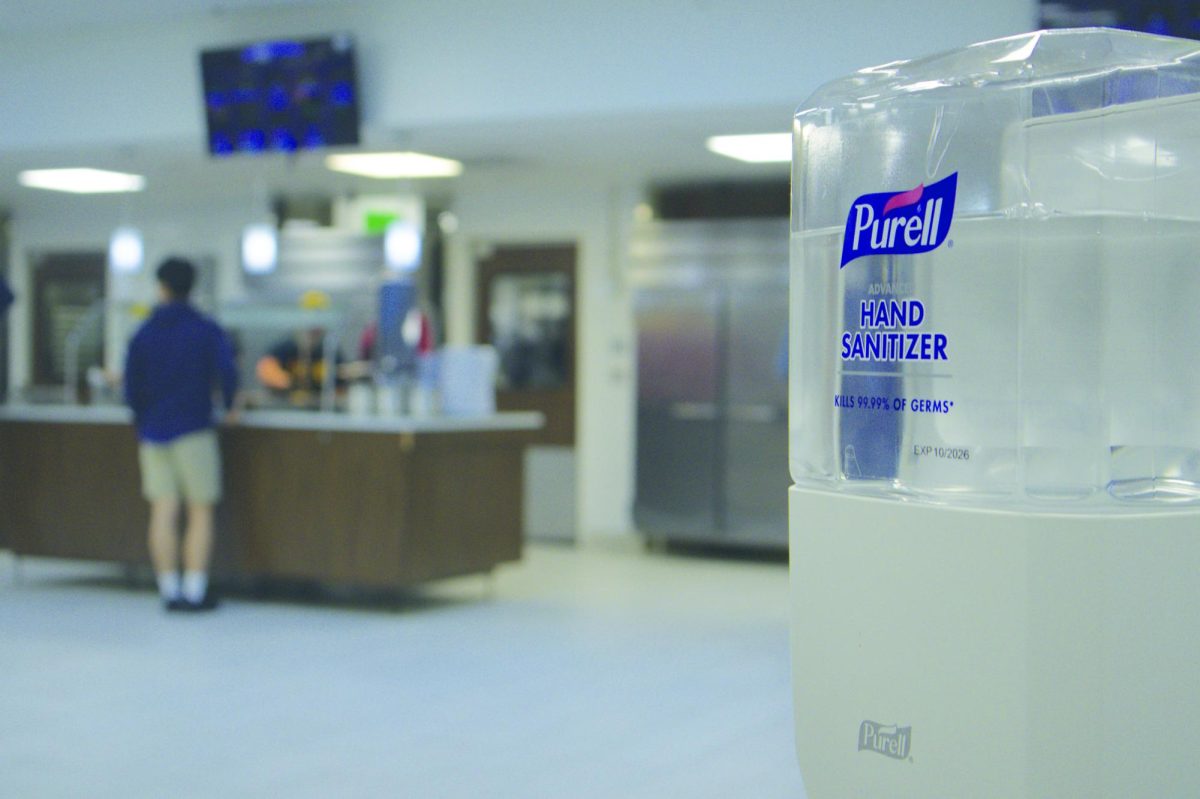A student walks into the cafeteria, hand sanitizer dispensers all around him.
He approaches the server’s line, where friendly parents wearing latex gloves use clean utensils to scoop food onto a washed plate.
Peeking behind the food stations, he can glimpse cooks keeping raw and cooked ingredients separate as they churn together massive amounts of food.
After eating, he places his tray in the return area, where it’s carted off to a dishwasher.
And the cycle repeats every day.
With each step of the journey, watchful eyes ensure that no illnesses have an opportunity to enter the food. And with a recent uptick in salmonella cases and other food-based pathogens, that vigilance has become increasingly important.
Almost two years after the end of COVID as an international health emergency, school nurse Julie Doerge believes most people have relaxed the strict hygiene habits that kept them healthy through the pandemic.
“We know there has been an increase in international travel and the end of the pandemic restrictions,” Doerge said. “During that time, we were all in a bigger safety mode. We were home, and we were all wearing masks. We couldn’t actually get all the foods we were always used to because groceries were in short supply. That doesn’t account for all of it, but I think that’s a part of it.”
While the most well-known effects of these pathogens are through human sickness, they also threaten the food supply in other ways.
“Because of the bird flu that has impacted so many poultry farms, there is now a scarcity of eggs,” Doerge said. “This makes the price of eggs more expensive.”
Doerge believes that the salmonella outbreak in 2024 is part of an increasing trend of foodborne illnesses. In addition to poor working conditions and relaxed health standards in processing units, she cites the increase in availability of worldwide foods as a major contributor to the rise in foodborne illness.
“We didn’t have things from all over the world all the time, and now we do,” Doerge said. “We know in other parts of the world, they do not have the same safety guidelines that we have in this country, and that impacts us. People travel more, so they have new exposures that we didn’t used to have.”
Many foodborne illnesses can be prevented simply by having hygienic habits while cooking at home, like thoroughly washing fruits and vegetables, using a meat thermometer, and separating utensils for raw and cooked items.
One of the dangers of foodborne illnesses is that the issue is not linked to a single virus. So far, scientists have discovered 31 different sources of foodborne illness. Norovirus accounts for 58 percent of illnesses. Salmonella makes up only 11 percent.
“There are 48 million cases of foodborne illness a year,” Doerge said. “That’s one in six adults. That’s a lot. I’m kind of grateful that I haven’t had it this year. We have 128,000 hospitalizations, 3,000 deaths a year from foodborne illness.”
While food-based illnesses are commonly related to meat items, the recent outbreak was linked to cucumbers. Doerge believes that the perception of certain foods and their susceptibility to pathogens do not always match in the eyes of most people. Even foods like rice can be covered in illness-inducing bacteria.
“My daughter called me and said, ‘Mom, do I have to throw away the carrots I bought at Trader Joe’s?’” Doerge said. “I said, ‘Well, look at the recall and see.’ She called me back and said, ‘Yep, I had to throw them away.’ I’m glad people are actually paying attention.”
Since SAGE took over as the school’s food provider, the safety standards in the kitchen have become increasingly meticulous, extending beyond the gloves and hand sanitizer required in the kitchens.
“SAGE goes to great lengths,” Doerge said. “A long time ago, I didn’t ever see the folks in the kitchen out with thermometers checking the temperature of food, and now they do it. I mean, since SAGE has come on board, they do it all the time. They’re checking the food on the salad bar. They’re checking the hot food line to make sure that those are at safe temperatures. We haven’t, in the 18 years I’ve been here, had a foodborne illness issue.”
Doerge believes this issue is important for Marksmen to be aware of before starting to cook their own meals and choose their own foods.
“As you all go off to college, it’s something for you to consider, because now you’re going to be in charge of where you eat, what you eat, how you eat and who cooks what you eat,” Doerge said. “And I think sometimes we might take a shortcut and maybe not do what our mom or dad advised us to or whoever’s been in charge in our kitchen when we were growing up. It’s good for everybody to be aware.”
Foodborne illness concerns rise
As foodborne illness cases increase across the country, food safety has become a high priority on campus.
February 7, 2025
Categories:
One of several hand sanitizing stations placed in and around the W.W. Browning Jr. Great Hall for students to clean their hands before lunch time and throughout the day.
More to Discover
About the Contributor
Akash Manickam, Digital Managing Editor








